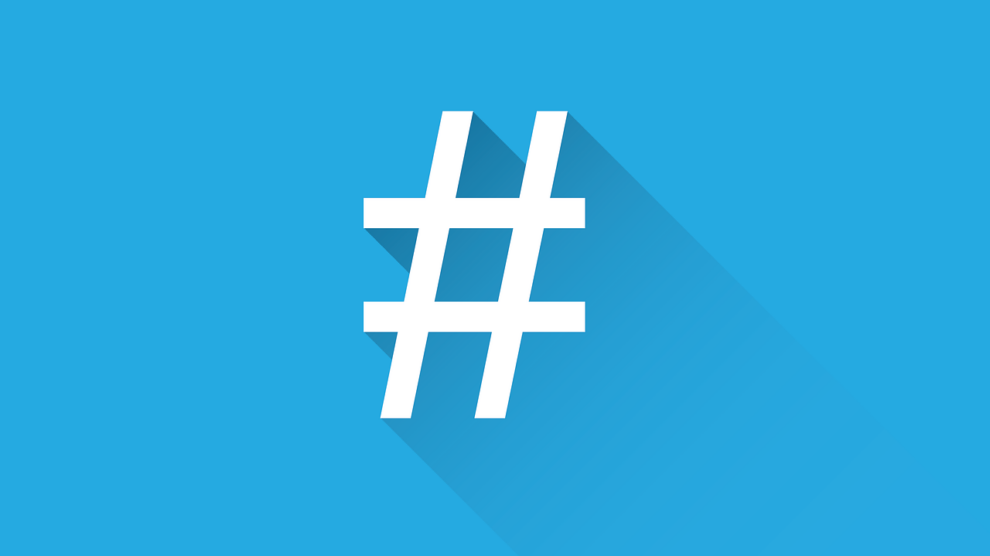Hashtag (#) – the power of this tiny symbol is significant. In the social media landscape it is like an engine to the keywords that stand like wagons queued behind it and has the power to take these keywords to innumerable destinations or posts where they will be seen further.
Hashtags have become an integral part of social media marketing today. Content labelled with hashtags becomes more discoverable than content that is unlabelle. Placed at the beginning of a keyword, it works like a propeller to power and push content forward for better reachability and effectiveness.
It gives the content right meaning by associating it with more relevant keywords, if implemented correctly.
But every activity has a certain etiquette and manner with which it should be performed, or else it may turn disastrous. The same rule applies for using hashtags.
Hashtags boost the visibility of your content or post and get it more engagements and shares. If used inappropriately, they may inversely affect the post, taking a toll on its credibility, and thus social activity, leaving you wondering what went wrong!
So being sure about exactly what you are doing with hashtags is very important, and for this, there are certain guidelines or best practices, that you should implement while using hashtags.
Best Practice 1: Perform your own Research
Research is to see what everybody has seen, and to think what nobody else has thought.
Albert Szent-Gyorgyi
Research helps you to not only know what others have done, but also find out what needs to be done. You may prepare unique strategies to drive results that help you standout.
The trends in hashtags keep changing as fast as the blink of an eye. The hashtag in trend today, may be outdated tomorrow. So, you need to update yourself constantly about the hashtags that you are willing to use. There are several tools to help you understand hashtags, namely What the Trend, Twitonomy and Hashtagify.me for Twitter, and Ritetag for both Twitter and Facebook.
Then there is SEMRush’s Social Media tool. In an effort to improve the Instagram section of this tool, SEMrush created the Instagram Report version 2.0.
The report has five section – Posts, Audience, Activity, Engagement, and Hashtags.
The Hashtag report provides a list of hashtags that are used in Instagram posts, and their respective performances. You can get a fair idea about which ones have performed for your posts and which ones you still need to use, to perform even better.
Apart from this, a competitor’s analysis is very crucial for your optimum performance. To beat your competitors, you need to understand them, their strategies and of course, their hashtags. The Hashtag report also presents the list of hashtags used by your competitors.
Understanding your audience is another aspect of the research that you perform. Unless you know about them, you won’t be able to deliver what they are looking for. The Audience Report in the Social Media Tool provides information related to rise and fall in the number of followers with a graphical presentation. So, you can actually find out which of your posts they are following and those posts that they unfollowed.
Best Practice 2: Go by the Rule Books of Social Media Platforms separately
Every social media platform is different in various ways, and so vary their set of user rules or guidelines.
Though the fundamental principles of these mediums are pretty similar, it is wise to review the rule book of the platform on which you will be posting using hashtags. The usability of hashtags on Twitter is far more complex than that on Facebook and Instagram.
Best Practice 3: Create Hashtags that are Unique
If you are creating Hashtags for yourself or your brand, you need to be sure about their uniqueness. Check if the Hashtag you have in mind is unique or not by using tools such as Hashtag, Hashtagify, Socialert, Hashtracking, TrackMyHashtag, etc.
Custom-creating your own unique Hashtags that define your identity is a healthy practice.
Best Practice 4: Including Capitals
To reap the benefits of hashtags, you need to make them understandable, which may be a challenge since no spaces are allowed between words in a hashtag. In fact, sometimes the mix of letters may give a different sense to the hashtag. Make sure, your self-created Hashtag does not end up being as funny as #susanalbumparty – a Hashtag created to promote an album party event by Susan Boyle in November 2012. Oops!
So, what can you do?
Well, it’s better if you capitalize the first letter of every word you use in the hashtag. That makes the words separately distinguishable and sensible.
Best Practice 5: Create Short & Crisp Hashtags
You may have ideas in abundance to express but don’t overload them in your Hashtags.
Create hashtags that are short, crisp, interesting, and of course easy to remember. Using long hashtags on platforms with limited space may be a problem, whereas short hashtags may allow enough space for captions as well.
Best Practice 6: Use Hashtags in the Caption Wisely
Instagram allows up to 30 hashtags on a post. Earlier, 11 hashtags were recommended since according to many digital marketers, too many hashtags made the post look spammy. Even if that is not the case, the post could lose attention by being flooded with captions.
There is a simple practice to avoid this. After you are done with the caption content, simply push down the hashtags leaving enough space so that they get hidden under the ‘See More’ button. Your caption won’t be missed, and the army of hashtags will do their part!
Best Practice 7: Use Sensible Hashtags
The sense of hashtags matters as much as the sense of the caption content because they help you reach out to your target audience and followers. Obviously, you get the right traffic that engages with your post and takes the desired action.
But adding hashtags like, #likes4likes #follow4follow, just to increase the number of likes and followers, won’t serve your purpose, which is not to gather a crowd, but the attention of a relevant audience. By using irrelevant hashtags, you may get likes and followers, but they will be of no use if they don’t engage with your post.
Best Practice 8: Run the Hashtag Campaign
Hashtags are not only meant to be used in posts the right way. You can in fact, run campaigns based entirely on them. But that requires you to think out of the box, and come up with a smart strategy that enables the campaign to win laurels for your brand.
In recent years, some of the most successful hashtag campaigns have been, #KnowYourLemons, #ORIGINALis, and #WeAccept.
#KnowYourLemons was the campaign run by the Worldwide Breast Cancer organization in an effort to spread awareness among women regarding breast Cancer and called for the need to check their breasts from time to time. The best part about this highly creative hashtag campaign was that it conveyed a big message in a simple way and didn’t require any particular literacy level.
Similarly, the campaign #ORIGINALis by Adidas was run in 2017 to highlight the brand’s original line that urged people to believe in the concept of uniqueness.
The hashtag campaign #WeAccept by Airbnb was intended to share the brand’s universal ideology of accepting and welcoming everyone on equal terms.
The recent COVID pandemic also birthed some great hashtag campaigns, one of which is #SelfIsolationHelp on Twitter, created to help people in isolation meet their daily requirements for living. Thousands of volunteers have come forward to make themselves available through the website www.localsupport.ie, helping people forced into isolation by performing day-to-day tasks on their behalf.
“This is not some self-referential Twitter nonsense, this is a genuine effort to put in another layer of support on top of all the effort that’s already going on,” said Ms O’Rahilly, the brain behind the campaign.
Best Practice 9: Tracking Hashtags
Finally, you should track the performance of all the hashtags you have been using. To analyse how these hashtags have been working for your brand, review the report in SEMRush’s Social Media tool under the Facebook section, Hashtags. The tool presents an overview of all the hashtags that have been used in your posts, as well as your competitors’. So, you can easily determine the performing hashtags used by your competitors.
Winding It Up
There are numerous ways you can leverage hashtags. Some are ethical while some may stray far from ethical guidelines. Your adherence to the above noted best practices will keep you safe from hashtag malpractice. It is always better to channel your thoughts and ideas in a proper way and perform all activities that fall within accepted guidelines.
Hashtags are the most trending part of social media today and are far from getting old. Make the best of them!





